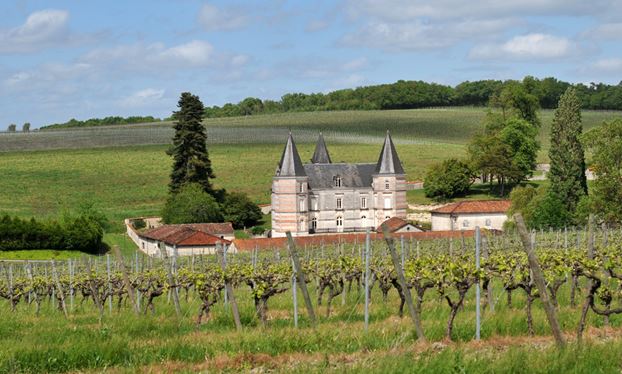Based out of Château Fontpinot on the outskirts of the village of Segonzac, the Frapin family has inhabited the rolling hills of Southern France for 750 years, first making wine before beginning to distil Cognac. But, as you’ll discover below, it’s not just the family’s long connection to the land that sets it apart from its neighbours.
What would you say sets Cognac Frapin apart from other houses?
“The most important thing is the terroir: Cognac comes from a limited area of terroir which is 75,000 hectares and grapes used must come from this area to produce a true Cognac. The main grape variety used in the region is Ugni Blanc (99%).”
While Cognac must, by law, be produced within the Cognac region, many houses source their grapes, eaux-de-vie and even mature spirit from a number of different producers in the area. Not so for Cognac Frapin, which retains control of its spirit from grape to bottle. Not only does this ensure the continued quality of the final product, but it allows Frapin to experiment with their spirit, and to truly showcase the terroir found in the estate’s 340 hectares of Grande Champagne vineyards.
Can you please explain production methods used in the past and how they are safe guarded today?
“Over the last three centuries, double distillation has not really changed at all. The principle remains the same: we heat the wine, then we refresh to get a liquid with a stronger concentration of alcohol. We then do this a second time. The ageing process has also remained in line with original production methods.
One aspect of production which has changed is the vineyards, which have changed with the introduction of mechanisation, this can be seen from just looking at the vines themselves. Before mechanisation, vines were planted without any organisation, now, vine-growers leave enough space between two rows of vines to allow the machines to go between them.”
Frapin’s control of its vineyards and what grows therein allows the estate to experiment with not just terroir, but also different grape types and the flavours that these might introduce to blends. Other grapes permitted for use in Cognac production include Colombard, Folle Blanche, Semillon, Montils and Folignan. Frapin have expanded beyond Ugni Blanc, which has been the foremost grape in Cognac since the Great French Wine Blight of the mid-19th century, and begun to experiment with the distillation of wines made from Folignan – a cross between Folle Blanche and Ugni Blanc.
Over the past few years, Cognac has seen a shift within society – younger people are starting to drink it and the category is receiving more recognition. Why do you think this is?
“I believe the shift has come from how consumption has changed over the years. For example, the trend of Cognac cocktails is increasing and generally speaking the younger crowd tend to favor cocktails. Another reason for this shift is the popularity of food pairing. More chefs are trying out new ways of food-pairing, something Cognac is perfectly suited for. A frozen Cognac, for instance, might pair excellently with fish, while a luxurious XO is perfect alongside a chocolate dessert.
More people are looking for an experience, this is why at our Château Fontpinot we offer a food-pairing experience every time with our cognac and it is always interesting and well-received.”
Can you please talk us through the importance of the wet and dry cellars at Frapin?
All of our Cognacs come exclusively from our vineyard in Grande Champagne, so to bring variability and different flavours to our range we have to look at our ageing process.
To do this we use two types of cellar:
Humid Cellar
In this cellar we generally lose less to evaporation every year, around 3% of the volume of each cask, but as part of this 3%, we lose more alcohol than water so it will bring roundness and suppleness to the cognac during a long ageing.
Dry Cellar
With our dry cellar we generally lose more by evaporation as it is under the roof and summer in Cognac is rather hot! We lose around 5% by evaporation but this time more water than alcohol, which gives us the opposite effect from our Humid Cellar, creating a Cognac which is richer in finesse and power.
Maturation of their extensive spirit stocks is also under direct Frapin control and spread across a four primary warehouse sites. Even these slightly-differing conditions, with all their discrepancies in temperature and humidity, produce spirits of different characters and flavours. All of these factors mean that Frapin can play with flavour and texture more than many other Cognac houses, all while remaining staunchly true to its terroir and its individual character.
Where does Frapin go from here?
Frapin now finds itself looking toward the future, with forward-thinking ideas around Cognac’s versatility and how it might be used, also extending to food. Visitors to Frapin’s Château Fontpinot might be lucky enough to experience a Cognac pairing with their meal – something the producer is keen to encourage.
Through these less-conventional Cognac experiences, alongside a continued appreciation for heritage blended expertly with experimentation, Frapin plans its continued growth and evolution – and hopes that you’ll join it on its journey.

